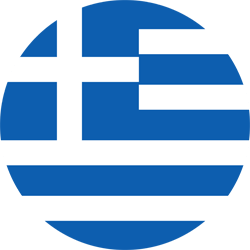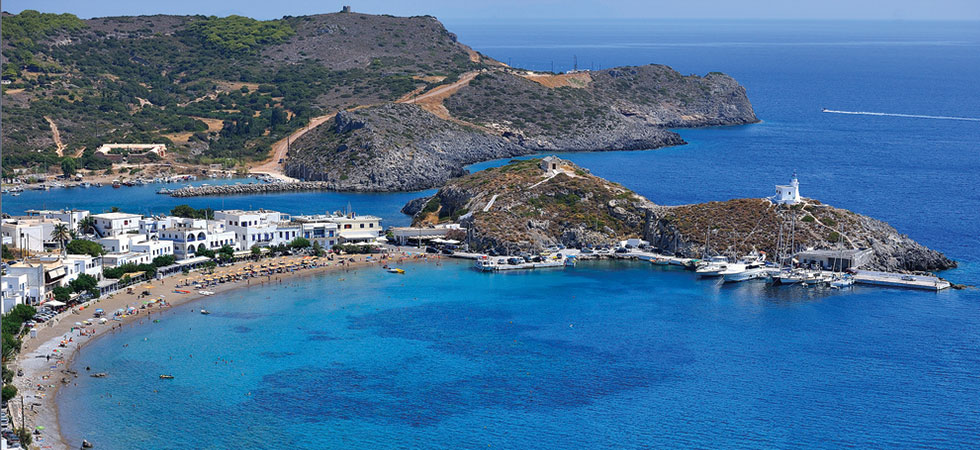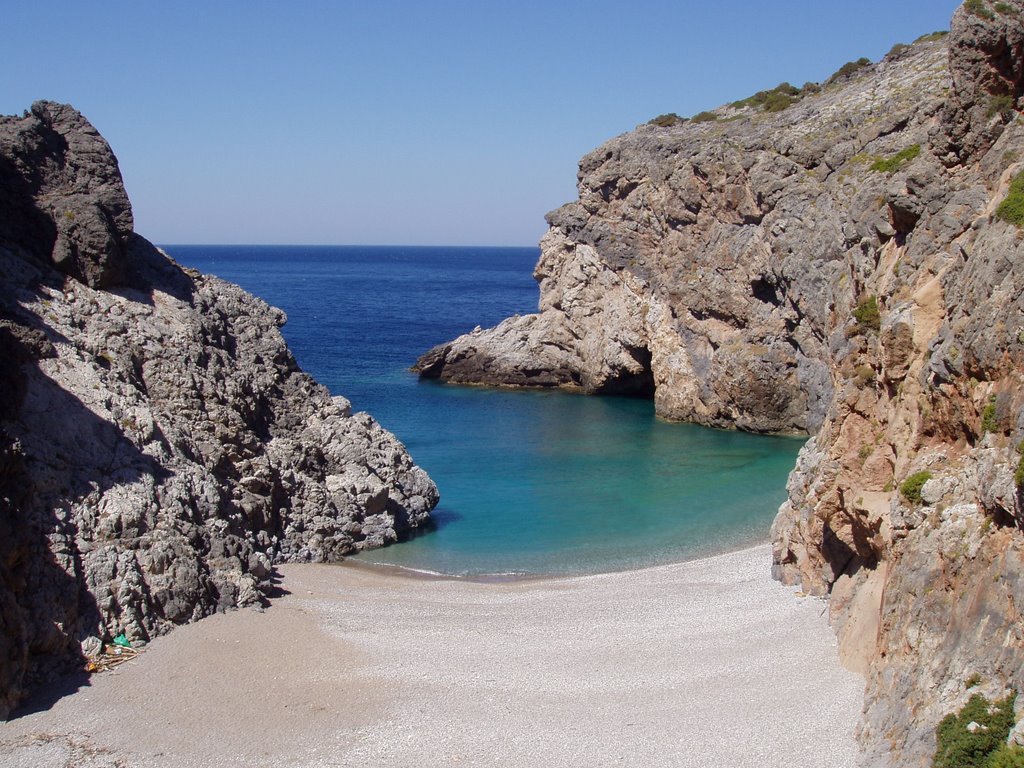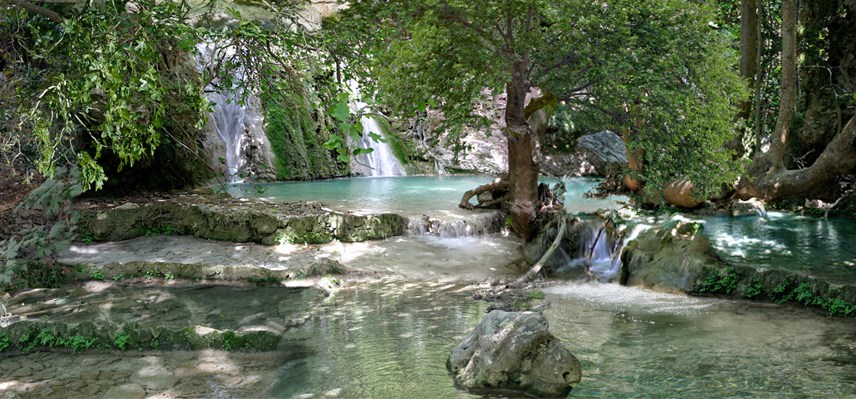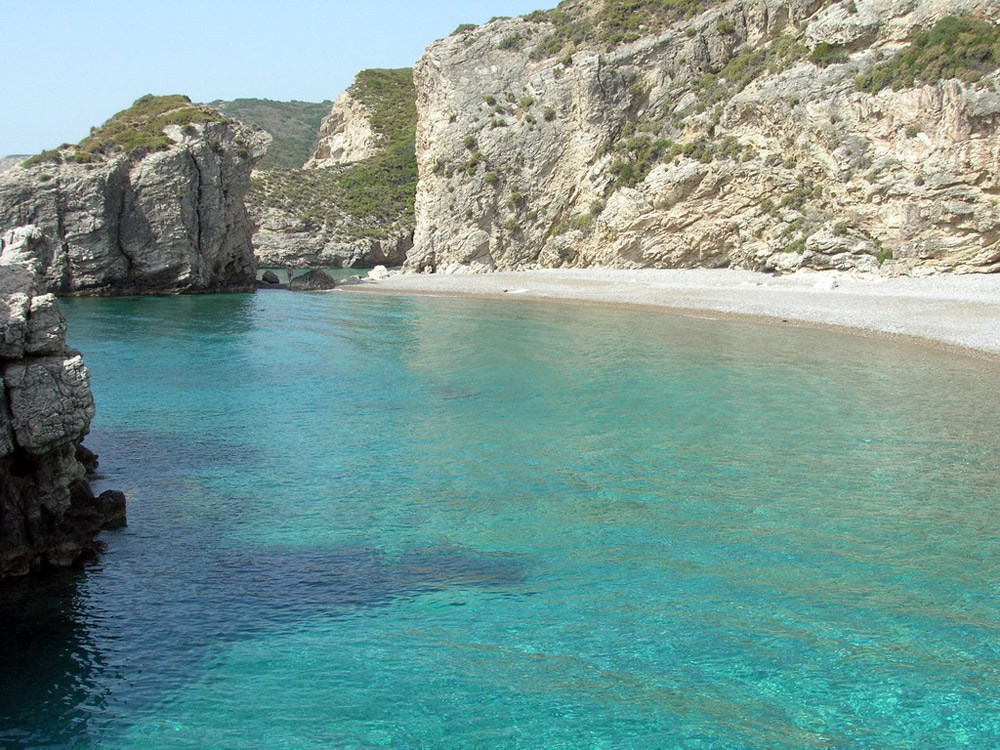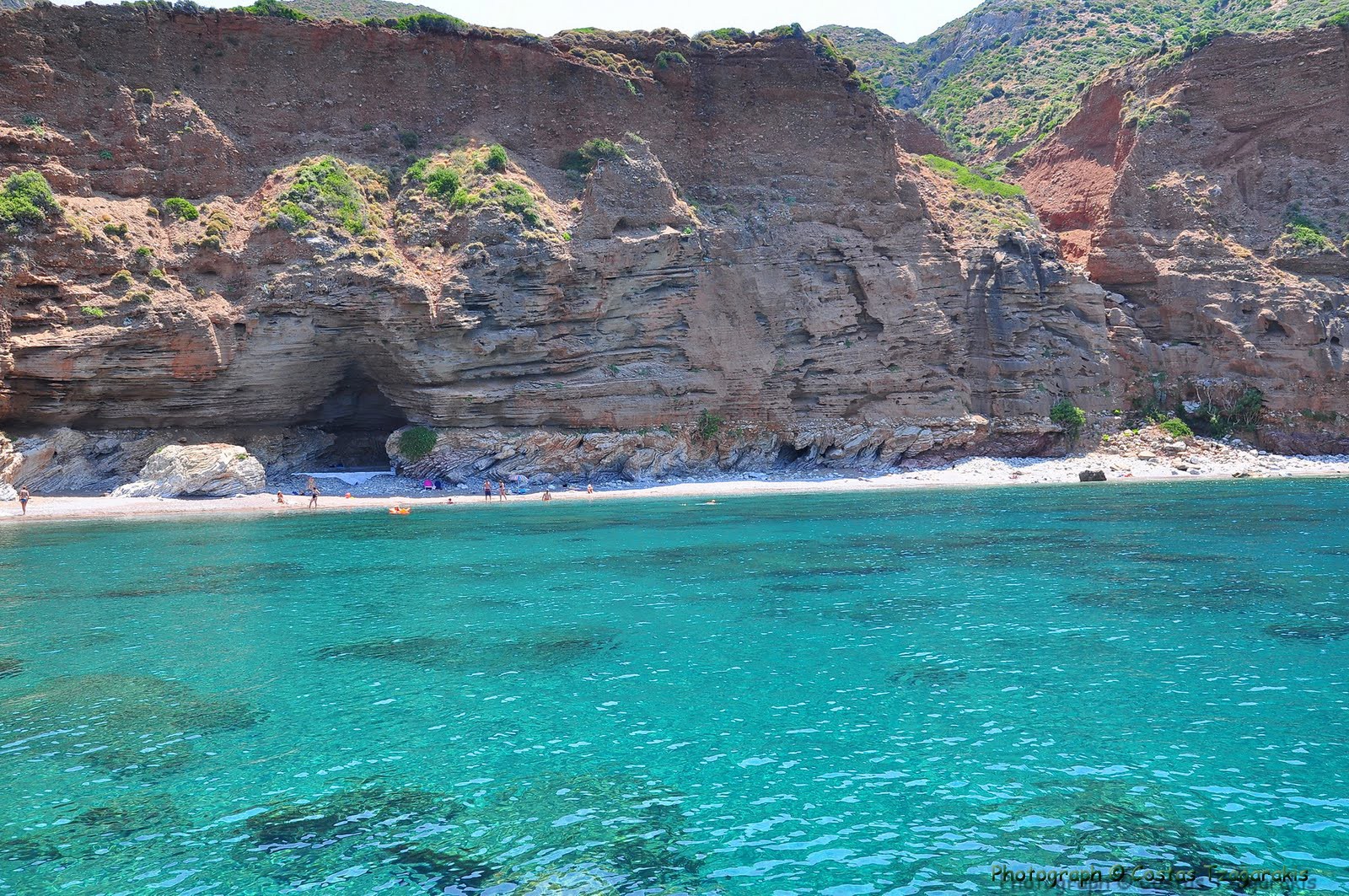Kythera, also known by the older Venetian name Tsirigo (Cerigo), is located in the south of the Peloponnese near Elafonisos and Cape Malia. According to mythology, the island of the goddess Aphrodite and Eros.
Homer, in the Iliad, refers to Kythera as “the Island” while the goddess Aphrodite is identified with it as she takes the nickname Kytheria. Many great writers of antiquity refer to the island by the name of Kythera. Among them are Herodotus, Aristotle who admits that the island was called Porphyrousa but in his day it was called Kythera and Xenophon in Greek who uses the term Kytheria land.
According to Hesiod’s Theogony, Aphrodite was born in the foams of the sea of Kythera, when the genitals of her father Uranus, cut off by Saturn, fell into her. According to this version of the myth, the waves then carried the goddess away, and she arrived at Paphos in Cyprus, where she was also worshipped as the island’s patron goddess.
The length of its coastline is about 90 km. At the northern end of the island is the lighthouse of Moudari, built in 1857 by the British, while at the port of Kapsali, in the southern part of the island, there is a lighthouse built in 1853.
Kythera is mountainous, with two main mountain ranges, one to the east and one to the west, between which there is a smooth plateau. There are rivers near Mylopotamos, Karavas and Mitata, while the other areas rely on wells for water supply. At Mylopotamos there are waterfalls and the water is used to power watermills, and it is there that the most fertile part of the island is located.
Kythera was united with Greece on 28 May 1864. In 1903 Kythera was hit by a strong earthquake which flattened Mitata, while buildings collapsed all over the island.
Kythera (Chora), Aroniadika, Kastrisianika, Kato Chora and Mylopotamos have been declared as traditional settlements. The preservation and promotion of the architecture, functionality and aesthetics of these settlements is currently being promoted by the local authorities.
The most beautiful and most popular beach on the island is Kaladi. It is a pebbly beach with turquoise clear waters located in the eastern part of the island, just next to Paleopolis. Melidoni, Agia Pelagia, Halkos and Diakofti beach with its exotic turquoise waters are just a small sample of the beautiful beaches of the island.
Antikythera or Tsirigotto (from the Venetian Cerigotto) is located at the passage between Kythera and Crete. In an ancient shipwreck on the island, the Antikythera Paphios and the Antikythera mechanism were found, a complex mechanism for navigation, for which there is extensive literature and scientists are still conducting research to this day. In fact, under the guidance of the Hellenic Ornithological Society, there is a study of about 250 species of birds that have been recorded on Antikythera and the surrounding islands. One of the most beautiful landscapes of the island is Kamarella. Also, the lighthouse of Apolitara which is located at the southernmost tip of the island and was built in 1926 is an excellent monument of modern architecture.
The island is famous for its olive oil, thyme honey, local sweets (almond, melunia, skarcelakia, pastitseta, etc.) and faturada (liqueur with cinnamon cloves and fruit).
DID YOU KNOW THAT…
-In Cyprus there is an area called Kythraia or Kythra, where statues of the goddess Aphrodite were found, while the common name of the area is Tzirka.
-According to mythology, Aphrodite was born in the foams of the sea of Kythera, when the genitals of her father Uranus, cut off by Saturn, fell into her.
-Ancient Antikythera shipwreck found the Antikythera Chaplain and the strange Antikythera mechanism, a complex mechanism for navigation, like an astrolabe

